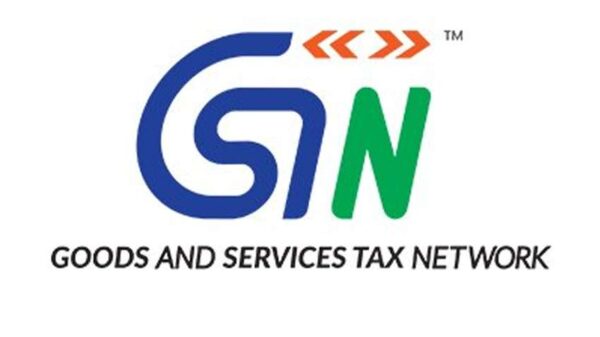Are you a businessman having a turnover of more than 2 crores for FY 2019-20? If yes then here are the takeaways for filing GST Annual Return. Taxpayers who have an annual turnover of more than 2 crores (relaxed to Rs 5 crores for FY 2018-19 and 2019-20 vide N.N 16/2020-Central Tax dated 23.03.2020 as amended vide N.N 79/2020–Central Tax dated 15-10-2020) in a year have to fill GSTR 9C form along with reconciliation statements and certification of audit in every financial year. GSTR 9C form is an annual audit form and “audit under GST” includes inspection of records, returns and other related documents that are maintained by a person registered under GST Act.
This entire mechanism is followed to ensure that correct information is disclosed with respect to turnover, input tax credit availed, taxes paid, refund claimed and assessment of the other related compliances as per GST Act that is to be verified by an authorization expert.
The GST regime is considered a trust-based taxation mechanism wherein a taxpayer has to undertake a self-assessment of his tax liability, file returns. and pay taxes. However, apparently, it seems that all taxpayers are honest. But this is not true and consequently, a “robust audit mechanism” is necessary to implement. A variety of steps are required to be taken by the government for apt implementation of the GST regime and audit is one amongst many of these measures.
Having said that, The Union Finance Minister Nirmala Sitharaman in Budget 2021 has proposed to delete the requirement of giving the GSTR audit report in the form GSTR-9C. The proposed amendment has already been notified vide Finance Act, 2021 after promulgation by President of India.
Although the ommission of GST Audit provision has not yet been enforced however it is expected that the Financial Year 2019-20 may be the last year of GST Audit. And an individual ought to rectify all the mistakes that have been done in previous years.
1. Compare GSTR-3B with GSTR-1 before the filing of GSTR-9
It is crucial for every taxpayer to “compare GSTR-3B with GSTR-1” for ensuring that there is the “absence of gaps or variations”. The existence of “Gaps or Variations” would, in turn, lead to
1. Unwanted issues/problems
2. the issuance of demand notices from tax authorities
Aforesaid issues would ultimately delay/obstruct “the precise filing of the annual returns”. Thus a proper reconciliation between the two should be made. In case any GST has not been paid on any outward supply the should be paid with filing of annual return.
2. Payment of Tax in Cash as per “Reverse-Charge Basis”.
In section 49(4) of the CGST Act 2017, “Input Tax Credit” (ITC) can be utilized for payment of output tax only. Consequently, under Reverse Charge Basis (RCM), Tax has to be paid in cash only and benefits of ITC cannot be availed. And so, the supplier must refer in his/her tax invoice whether the tax paid is a reverse charge or not..
3. Interest charged in case of Untimely/Late Payment of GST
It is the duty of the taxpayer to pay GST timely. In case of late payment of GST, interest shall have to be paid. Moreover, instructions in notices issued by tax authorities have to be strictly adhered to. And if excess ITC is claimed, the rate of interest to be paid shall be 24% on the “tax amount” that is in excess.
4. Reversal of Input Tax Credit
The Government has inserted section 16(2) and Rule 37 in the aforesaid GST law. As per section 16(2) and Rule 37, non-payment of consideration within 180 days shall lead to the reversal of ITC. Also reversal of credit as per Rule 36(4) (made effective from 09.10.2019) should also be seen.
5. E-way Bill
In case of transportation of goods from one place to another, the transporter should possess an e-way bill that must tally with the invoices issued.
6. “GST Audit Turnover” in tune with “Income Tax Turnover”
As per the latest update, both the departments – Department of Income Tax and Department of GST- shall exchange relevant information with each other. Consequently, an individual needs to be careful while reporting turnover under Income Tax and GST.
7. GSTIN wise Audit
In case the PAN-based aggregate turnover exceeds Rs 5 crores, every registered GSTIN (having the same PAN) shall have to
1. Fill GSTR-9C and
2. His accounts shall be audited
If both the branches possess the same GSTIN, then for determining the threshold limit, the stock transfers shall not be included in aggregate turnover. And
If both the branches have different GSTIN, then for determining the threshold limit, the stock transfers shall be included in aggregate turnover.
8. Categorisation of ITC that is availed
The ITC should have to be categorised under 2 headings: Purchases and different types of expenses like Capital goods, Bank charges, freight and so on.
9. Stock Transfer
The amount of stock that is disclosed in the books of accounts and the GST annual return should be the same. However, Stock transfer outside the boundary of the state is assumed as supply under GST.
10. Checking Inwards Supply and Outwards Supply
It is necessary for the taxpayer to assure that the apt rate is levied on both the Inwards Supply and Outwards Supply in addition to considering exempted supply. Thus it should be ensured that proper classification and use of correct HSN Codes is made while issuing invoices for outward supply.
Source: goodreturns.in
Follow us for free tax updates : facebook Twitter
***
Subscribe our portal and get FREE Tax e-books , quality articles and updates on your e-mail.
Resolve your GST queries from national level experts on GST free of cost.
TW Editorial Team comprises of team of experienced Chartered Accountants and Advocates devoted to spread the knowledge of GST amongst the various stakeholders.




